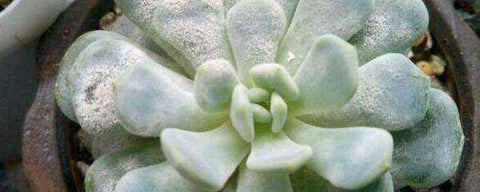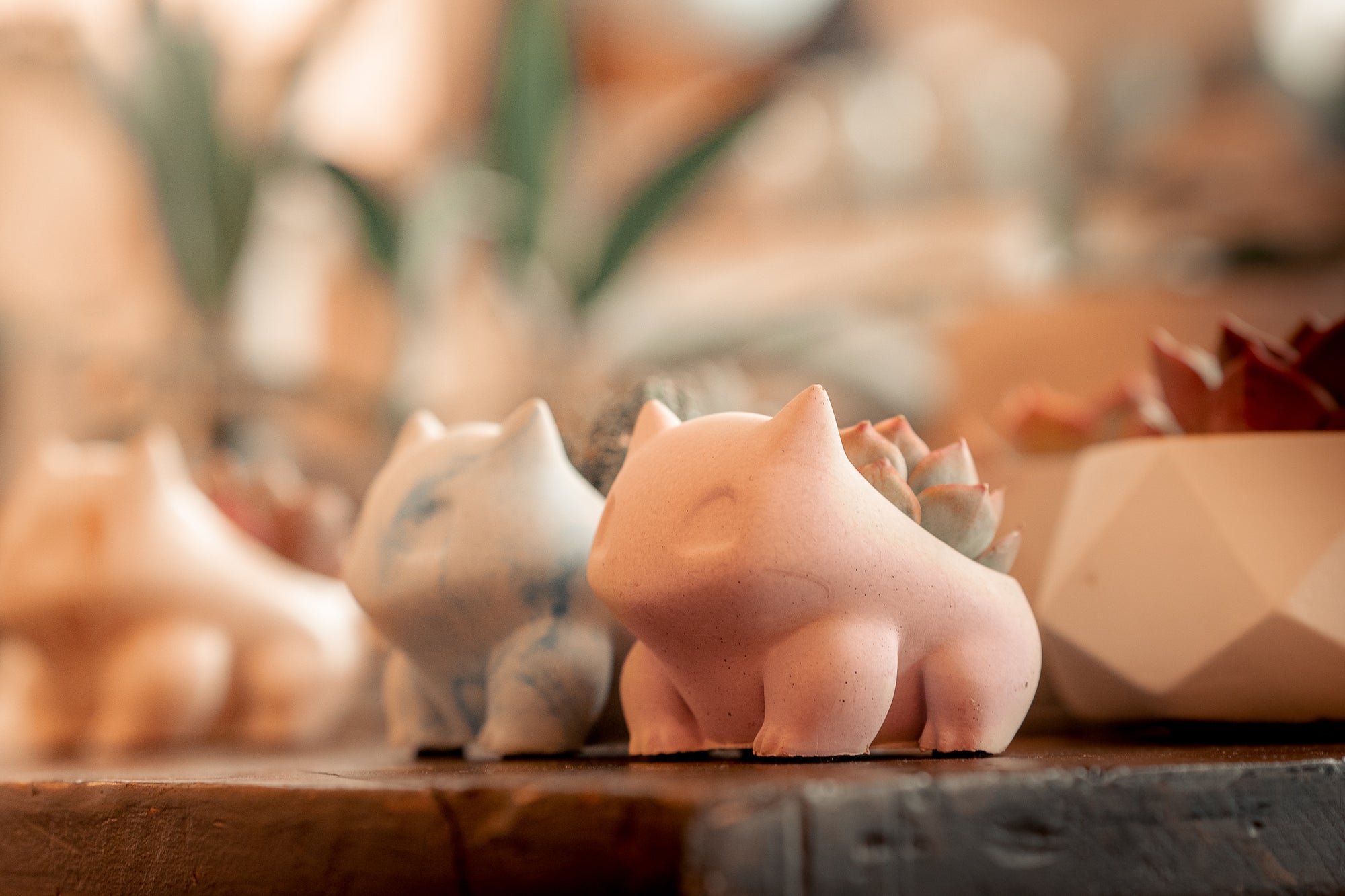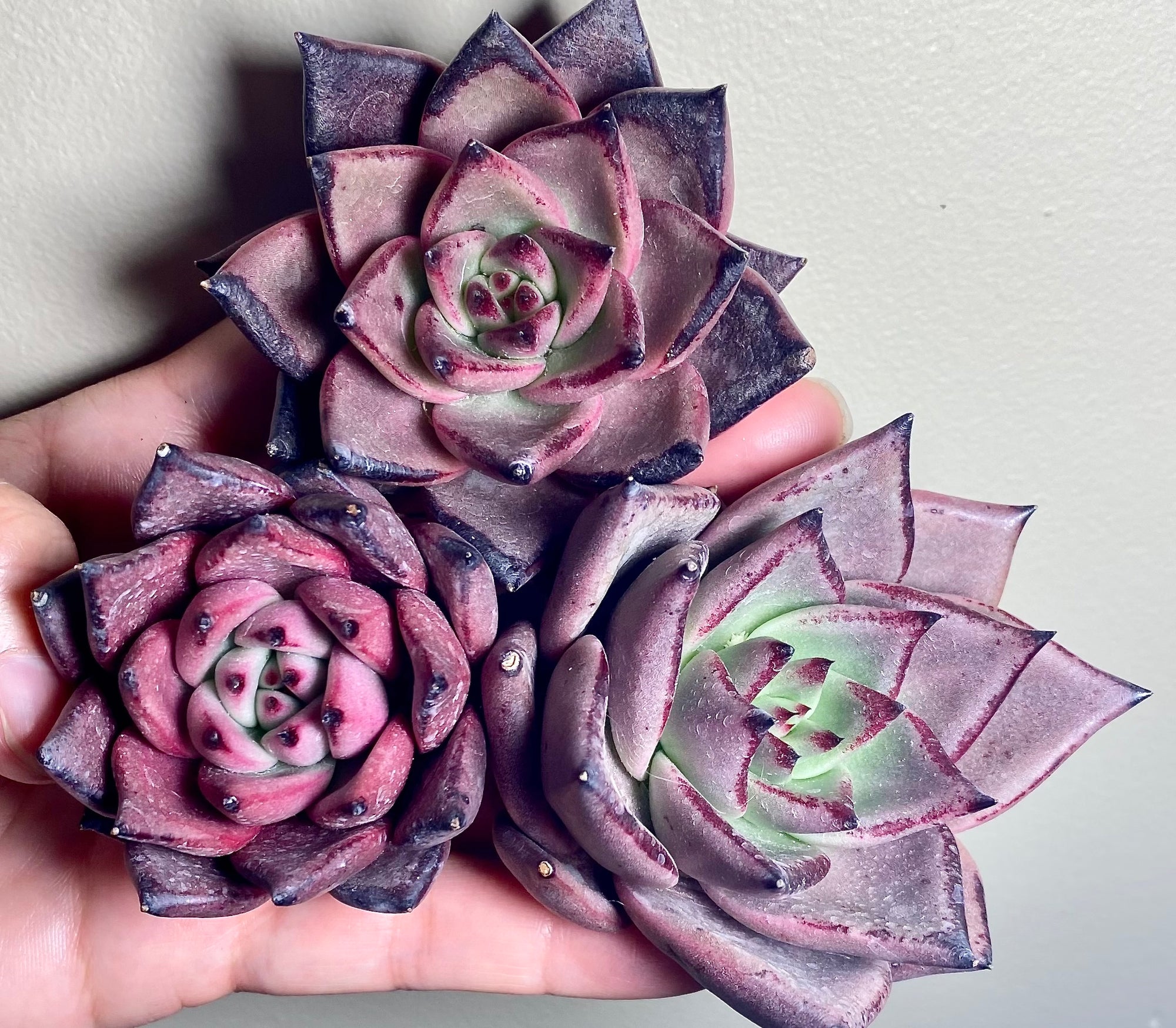
Fungal Infection?
By Lucy Nguyen
Fungus Problem?
Have you looked at your succulent or house plants and noticed some black/white spots on them? Diseases and pests will develop when plants are overwatered, or underwater, along with the lack of air flow. When they are highly stressed, they are unable to protect themselves allowing for disease to develop. There are many different types of fungus that can attack your plants' foliage, causing damage or sometimes killing the plant if left untreated. The most common fungal issues that I find many plant collectors and hobbyists often deal with are black fungus and powdery mildew. It can often be frustrating and heart breaking to have your favourite plant(s)/succulent(s) infected and eventually die. Let’s dive deeper on the causes and some remedies to treat them.
What is fungus? And what are the causes?
Powdery mildew is pretty easy to identify. It is a white or grey powdery film on a plant’s leaves and/or stem. This particular fungus thrives in warm, humid environments and overwinters in the soil. It is important that the substrate is well drained to ensure the soil does not stay wet for too long or when water does not stay on the leaves for a long period of time. Powdery mildew will start off as white spots on leaves or stems. As the infection spreads, the spots with turn yellow-burn and eventually black. As the plant continues to grow its leaves, they will be distorted and eventually wilt and die off.
Here are some remedies
Black Fungus
 .
. 
(E. Torres) ( E. Fire Pillar) - left outside
Powdery Mildew

Source: The Plant Aide
- Milk - there is no scientific explanation to why milk helps to treat powdery mildew, but it is believed that when milk interacts with the sun, it produces free radicals that are toxic to fungus. Using a 60:40 milk-to-water mixture, spray the infected plants bi-weekly.
- Banking Soda - this is used as more of a preventative method. Baking soda creates an alkaline environment which will kill fungus. This will raise the pH level to 9, which is very high (refer to our benefit of rainwater on pH level).
- mix 1 tbsp of baking soda with 1/2 tbsp of hand soap in 1 gallon of water
- spray affected leaves with the resulting mixture. **do not apply during daylight hours
- Sulphur - very effective at preventing and controlling powdery mildew. Follow the instruction on the bottle. Sulphur can be purchased as a dust or liquid.
- Neem oil - very effective in treating powdery mildew by disrupting the plant's metabolism and stopping spore production. Neem oil can be used as a preventative measure as well.
- mix 3 tbsp of Neem oil in 1 gallon of water
- apply to infected plants every 7-14 days






